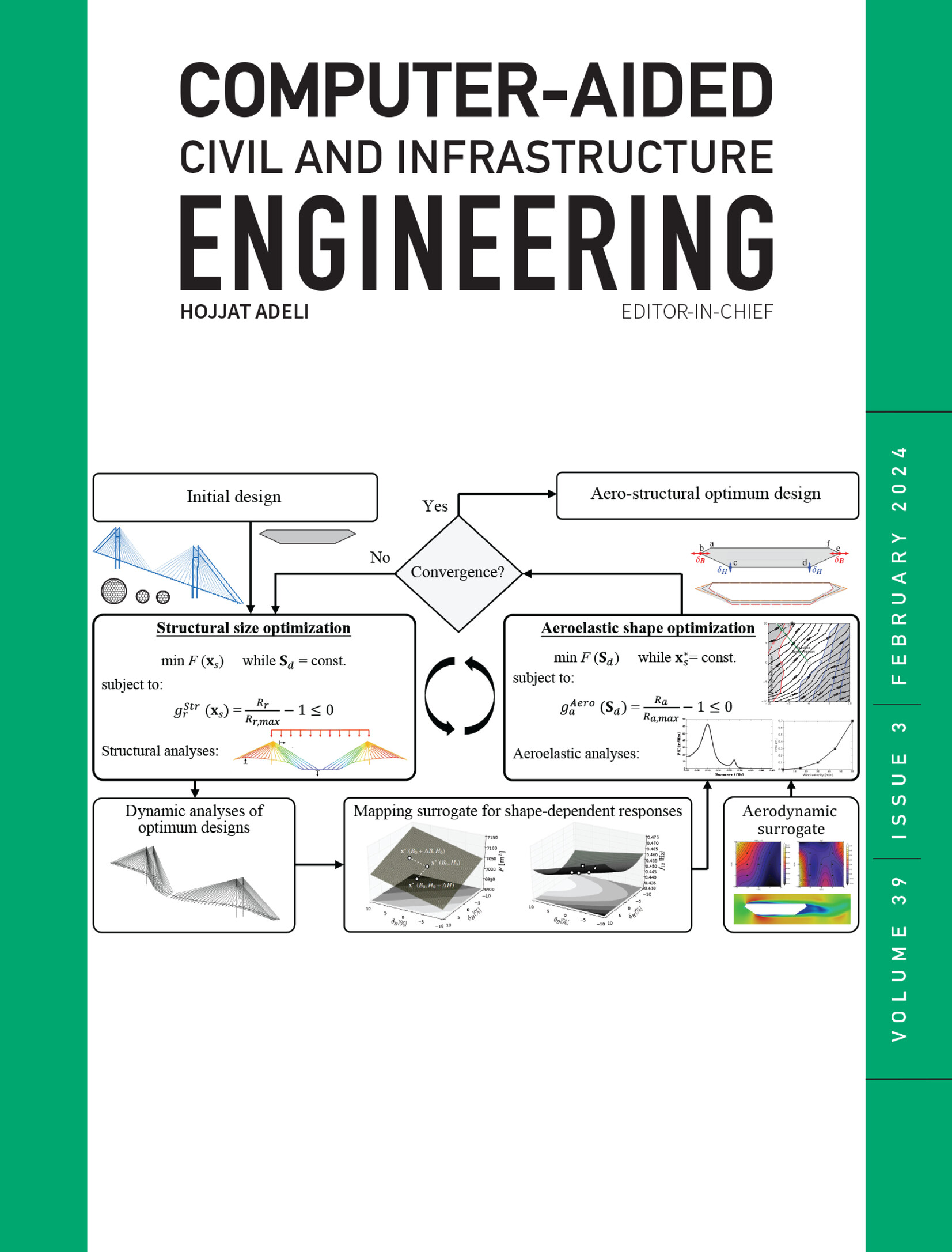A spatial graph learning framework for multi‐scale road safety management based on road‐curve features and open‐source data
IF 9.1
1区 工程技术
Q1 COMPUTER SCIENCE, INTERDISCIPLINARY APPLICATIONS
引用次数: 0
Abstract
Horizontal and vertical curves significantly affect crash risk due to their impact on driver behavior, vehicle dynamics, and sight distance. However, their combined effects and spatial interactions remain underexplored in large‐scale safety assessments. To address limitations in high‐resolution geometric data and insufficient spatial modeling, this study proposes a geometry‐oriented crash risk assessment framework based on graph neural networks. Leveraging open‐source geospatial data, this study extracts fine‐grained curve features and constructs a GraphSAGE model to capture spatial dependencies among road segments. A dual‐graph architecture is developed to jointly encode both segment‐level and network‐level information. In large‐scale empirical evaluations, the proposed model exhibits excellent predictive performance (F1 > 0.985) and strong spatial correlation with historical crash distributions (基于道路曲线特征和开源数据的多尺度道路安全管理空间图学习框架
由于水平和垂直曲线对驾驶员行为、车辆动力学和视距的影响,它们显著影响碰撞风险。然而,在大规模的安全评估中,它们的综合效应和空间相互作用仍未得到充分的探讨。为了解决高分辨率几何数据的局限性和空间建模的不足,本研究提出了一个基于图神经网络的面向几何的碰撞风险评估框架。利用开源地理空间数据,本研究提取了细粒度曲线特征,并构建了GraphSAGE模型来捕获道路段之间的空间依赖关系。开发了一种双图架构,用于对段级和网络级信息进行联合编码。在大规模的实证评估中,该模型表现出优异的预测性能(F1 > 0.985),与历史碰撞分布具有较强的空间相关性(r > 0.7)。该模型有效地识别出几何连续性差或结构突变的高风险路段,为路线优化提供决策支持。该模型有效地识别出以几何连续性差或结构突变为特征的高风险路段,从而支持明智的路线改进决策。该研究增强了对几何与安全关系的理解,并提供了一个可扩展的开源工具来支持地方和区域交通安全干预。
本文章由计算机程序翻译,如有差异,请以英文原文为准。
求助全文
约1分钟内获得全文
求助全文
来源期刊
CiteScore
17.60
自引率
19.80%
发文量
146
审稿时长
1 months
期刊介绍:
Computer-Aided Civil and Infrastructure Engineering stands as a scholarly, peer-reviewed archival journal, serving as a vital link between advancements in computer technology and civil and infrastructure engineering. The journal serves as a distinctive platform for the publication of original articles, spotlighting novel computational techniques and inventive applications of computers. Specifically, it concentrates on recent progress in computer and information technologies, fostering the development and application of emerging computing paradigms.
Encompassing a broad scope, the journal addresses bridge, construction, environmental, highway, geotechnical, structural, transportation, and water resources engineering. It extends its reach to the management of infrastructure systems, covering domains such as highways, bridges, pavements, airports, and utilities. The journal delves into areas like artificial intelligence, cognitive modeling, concurrent engineering, database management, distributed computing, evolutionary computing, fuzzy logic, genetic algorithms, geometric modeling, internet-based technologies, knowledge discovery and engineering, machine learning, mobile computing, multimedia technologies, networking, neural network computing, optimization and search, parallel processing, robotics, smart structures, software engineering, virtual reality, and visualization techniques.

 求助内容:
求助内容: 应助结果提醒方式:
应助结果提醒方式:


